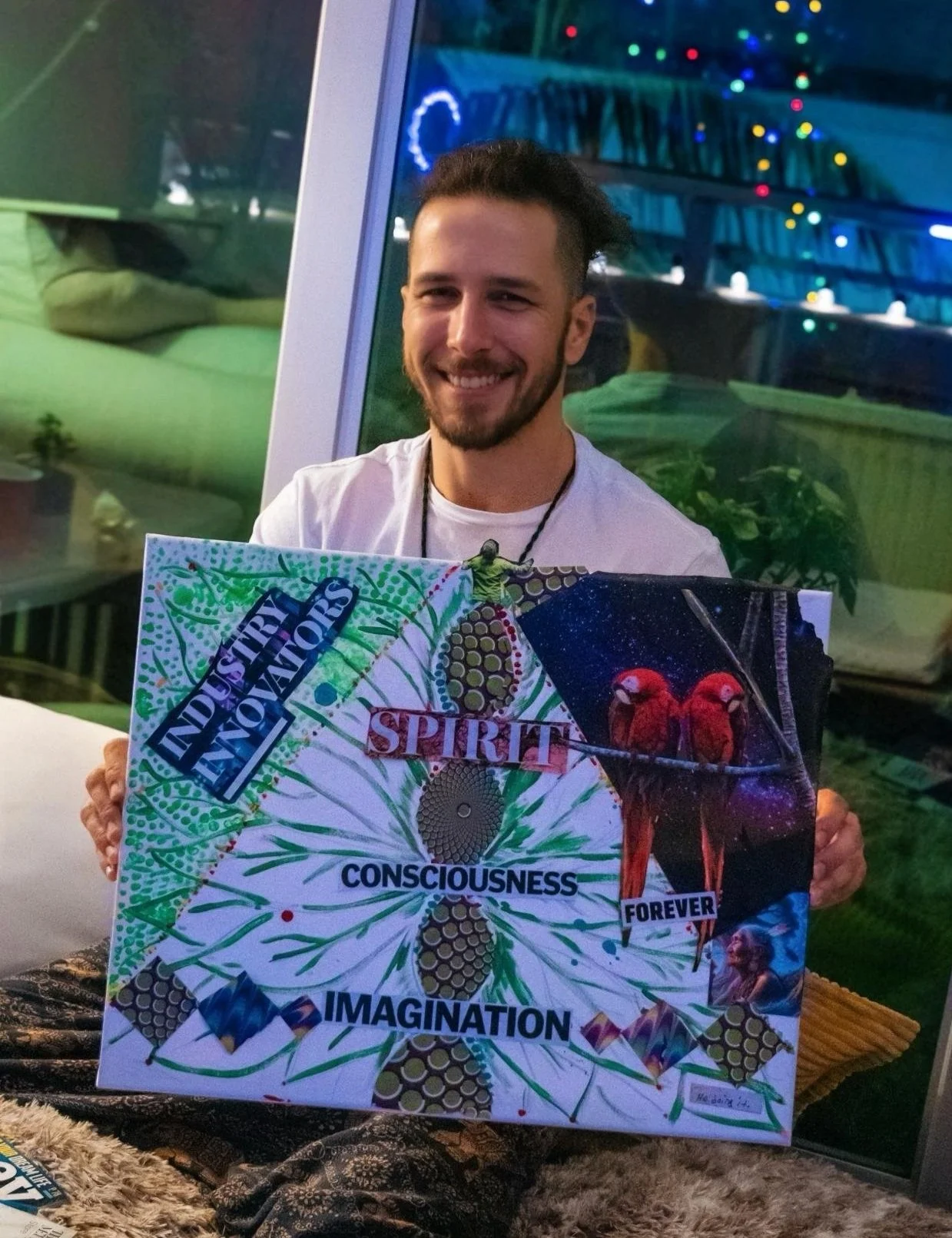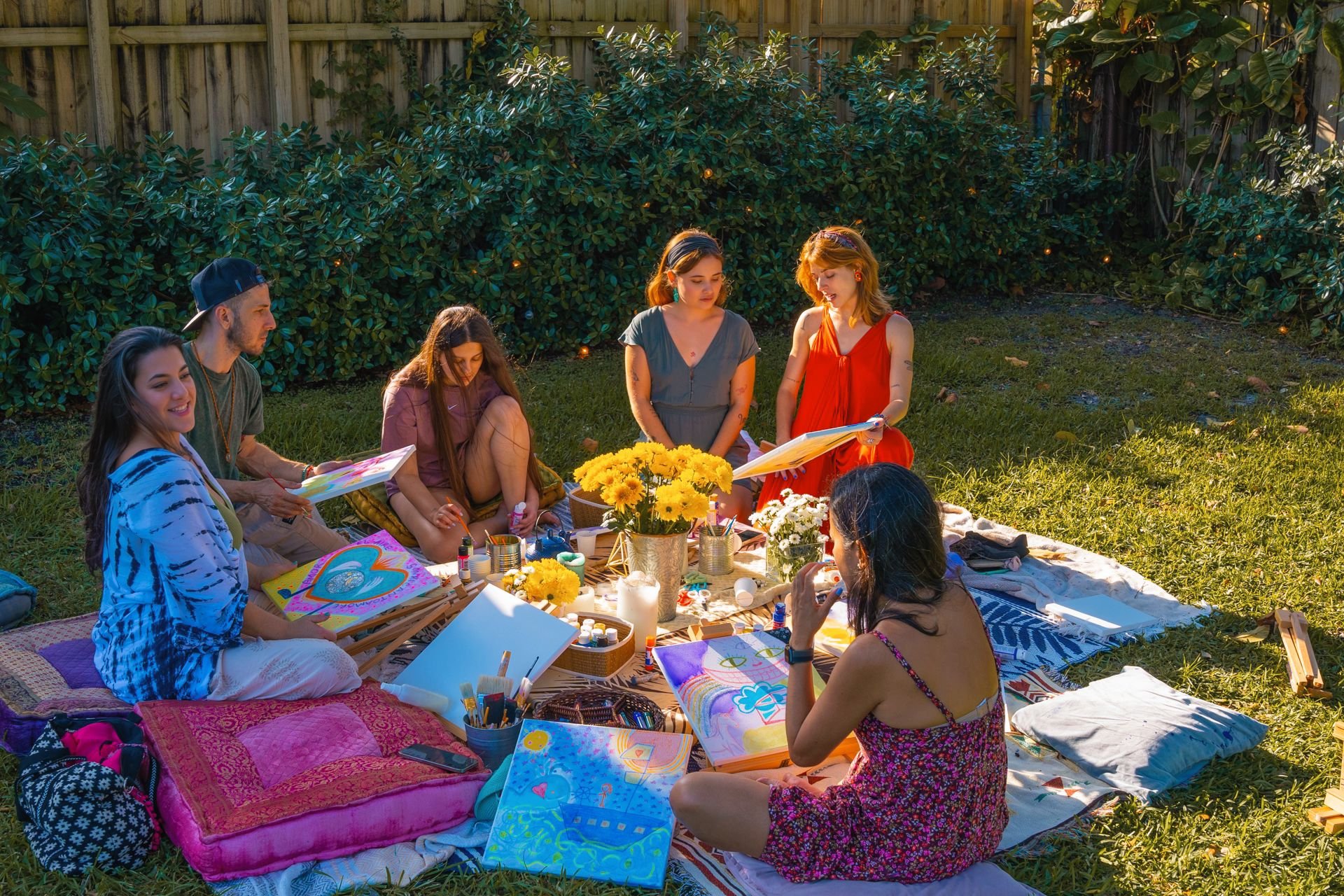Cut, Paste, Play:
A Beginner’s Guide to Collage
If you’re someone who’s curious about making art but not quite ready to dive into the world of paints and brushes, collage might just be your perfect starting point.
It’s one of my favorite techniques to teach because it’s simple, fun, and full of possibility. All you need are a few basic tools and the willingness to let your intuition take the lead. There’s no pressure to draw or paint anything, just a chance to explore what’s already out there and make something beautifully your own.
What You’ll Need
You don’t need a studio or a shopping spree. You probably have most of these at home:
• Scissors or a paper cutter
• Glue stick or liquid glue
• Old magazines, newspapers, printed images, or decorative paper
• A base: cardboard, canvas, sketchbook page, or anything sturdy.
That’s it. No rules. Just fragments and possibility.
A Little Bit of Collage History
Collage, from the French coller (meaning “to glue”), officially entered the art world in the early 20th century, when artists like Picasso and Braque began incorporating scraps of newspaper, wallpaper, and fabric into their paintings. It was rebellious, fresh, and a little chaotic, a way of saying “Art isn’t just what we paint, it’s what we assemble from the world around us.”
Since then, collage has taken many forms: surreal photo mashups, political statements, journal pages, fashion mood boards, and abstract visual poems.
It’s accessible, emotional, and deeply personal.
Two Ways to Collage
There’s no single way to collage, but here are two approaches I often use in workshops:
1. Fill a Pre-Outlined Shape
Draw or trace a shape or object (like a silhouette, flower, heart, or animal), then fill it in entirely with paper cutouts. Think of it like a puzzle with no rules, just colors, textures, and layers.
2. Curate by Theme or Feeling
Instead of starting with a drawing, gather images that speak to a certain topic or aesthetic. Maybe it’s “sunsets,” “movement,” “nostalgia,” or “cosmic vibes.” Build the piece based on color, mood, and story.
Try This Exercise: Intuitive Assembly
Here’s something you can do today, even if you’ve never collaged before.
1. Choose a theme or vibe, something that excites or soothes you.
2. Start cutting out images that connect to that theme. Look for:
• 4–6 visuals that evoke the feeling
• 2–3 blocks of color or texture
• 1–2 words or letters that relate to the concept
3. Place them on your surface. Don’t glue anything yet. Just play. Move pieces around. Try different layouts. Notice which ones feel right next to each other. Which images want to be the background, and which ones want to stand out?
4. Once everything makes sense to you, start gluing.
That’s the magic moment, when it clicks. You’ll feel it.
Why I Love Collage
It slows you down. It trains your eye. It teaches you to listen to your intuition.
It’s not just a craft, it’s a conversation between you and the world of images we’re all constantly absorbing.
And best of all? There are no mistakes. Just pieces finding their place.






